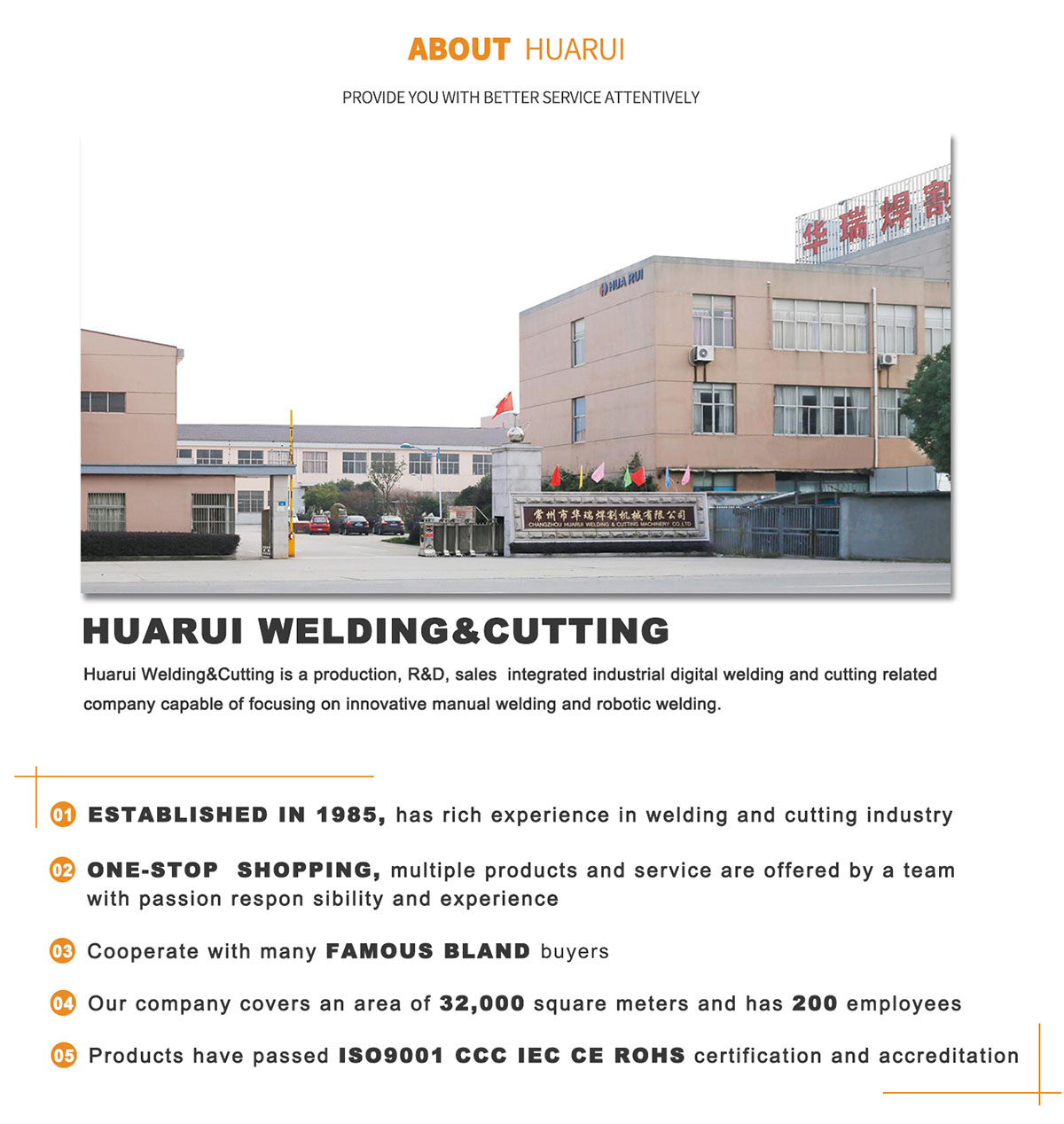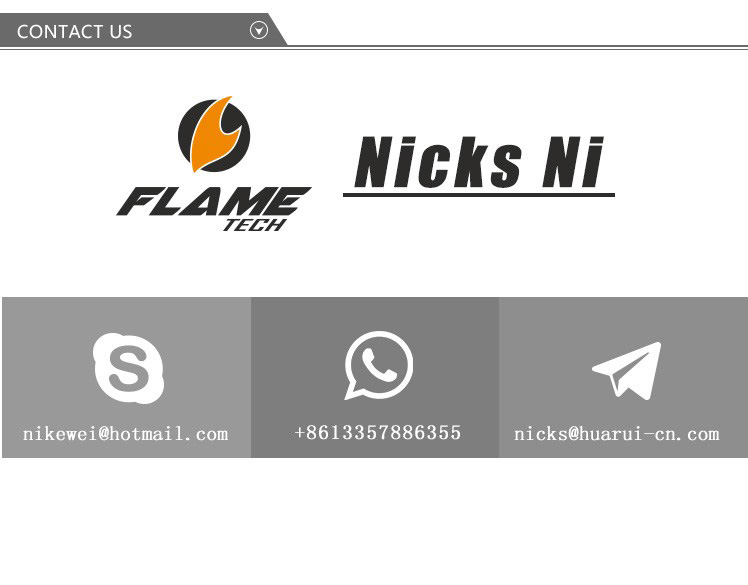- Welcome To Changzhou Huarui Welding & Cutting Machinery Co., Ltd.!
- About Huarui | Inquiry Form | Contact Us |
 中文
中文
 中文
中文1. Welding splash
The splash produced by laser welding seriously affects the surface quality of the weld and can contaminate and damage the lens. Generally, after laser welding is completed, many metal particles appear on the surface of the material or workpiece, attached to the surface of the material or workpiece.
Spatter cause: The surface of the processed material or workpiece is not cleaned, there are oil stains or pollutants, and it may also be caused by volatilization of the galvanized layer.
The solution:
A. Pay attention to cleaning materials or workpieces before laser welding.
B. Splash is directly related to power density. Appropriate reduction of welding energy can reduce spatter.
2. Cracks
2. The cracks produced by continuous laser welding are mainly hot cracks, such as crystal cracks, liquefaction cracks, etc.
The cause of the crack is mainly caused by excessive shrinkage force before the weld is not completely solidified.
Solution: Filling wire, preheating and other measures can reduce or eliminate cracks.
3. Stomata
The surface porosity of weld is a defect that is easy to appear in laser welding.
Causes of stomata:
A. The laser welding pool is deep and narrow, and the cooling speed is fast. The gas produced in the liquid molten pool is too late to overflow, which easily leads to the formation of pores.
B, the weld surface is not cleaned, or galvanized zinc vapor volatilization.
Solution: Clean the surface and weld surface before welding to improve the volatilization of zinc when heated. In addition, the blowing direction also affects the formation of stomata.
4. Bite the edge
The biting edge refers to: the weld is not well combined with the base material, there is a groove, the depth is greater than 0.5mm, the total length is greater than 10% of the weld length, or greater than the length required by the acceptance standard.
Reasons for edge biting:
A. The welding speed is too fast, and the liquid metal in the weld will not be redistributed on the back of the small hole, forming A biting edge on both sides of the weld.
B, the joint assembly gap is too large, the molten metal in the joint filling is reduced, and it is also easy to bite.
C, at the end of laser welding, if the energy decline time is too fast, the small hole is easy to collapse, and it will also cause local edge biting.
The solution:
A. Control the processing power and speed matching of laser welding machine to avoid edge biting.
B. The edge of the weld found in the inspection can be polished, cleaned and repaired to make it meet the requirements of the acceptance standard.
5. Weld accumulation
The weld is obviously overfilled, and the weld is too high when it is filled.
The cause of weld accumulation: the wire feed speed is too fast or the welding speed is too slow.
Solution: Improve the welding speed or reduce the wire feed speed, or reduce the laser power.
6. Welding deviation
The weld metal does not solidify in the center of the joint structure.
The reason for this situation: inaccurate positioning during welding, or inaccurate filling welding time and welding wire alignment.
Solution: Adjust the welding position, or adjust the repair welding time and the position of the welding wire, as well as the position of the lamp, the welding wire and the weld.
7. The weld is dented
Weld concave refers to the phenomenon of concave weld metal surface.
The reason for the weld depression: when brazing, the solder joint center is poor. The center of the spot is close to the lower plate and deviates from the center of the weld, resulting in partial melting of the base material.
Solution: Adjust the light matching.
8. Bad weld forming
Poor weld forming includes: poor weld ripple, uneven and irregular weld, uneven transition between weld and base material, poor weld and uneven weld.
The reason for this situation: when the weld is brazed, the wire feed is unstable, or the light is discontinuous.
Solution: Adjust the stability of the equipment.
9. Uneven weld bead
Uneven weld path refers to: when the weld trajectory changes greatly, the corner is prone to uneven weld path or molding.
Cause: the trajectory of the weld changes greatly, and the teaching is uneven.
Solution: Welding under the best parameters, adjust the Angle of view, so that the Angle is consistent.
10. Surface slag inclusion
Surface slag inclusion refers to: in the welding process, the skin slag inclusion that can be seen from the outside mainly appears between layers.
Cause analysis of surface slag inclusion:
A, multi-layer and multi-pass welding, the interlayer coating is not clean; Or the surface of the previous layer of weld is not smooth or the surface of the weldment does not meet the requirements.
B, welding input energy is low, welding speed is too fast and other improper welding operation technology.
The solution:
A. Select reasonable welding current and welding speed. The interlayer coating must be cleaned during multilayer and multipass welding.
B. Polish the weld to remove the slag on the surface, and repair the weld if necessary



 master@huarui-cn.com
master@huarui-cn.com 86-519-86371071
86-519-86371071 86-519-86371072
86-519-86371072
View More(Total0)Comment Lists